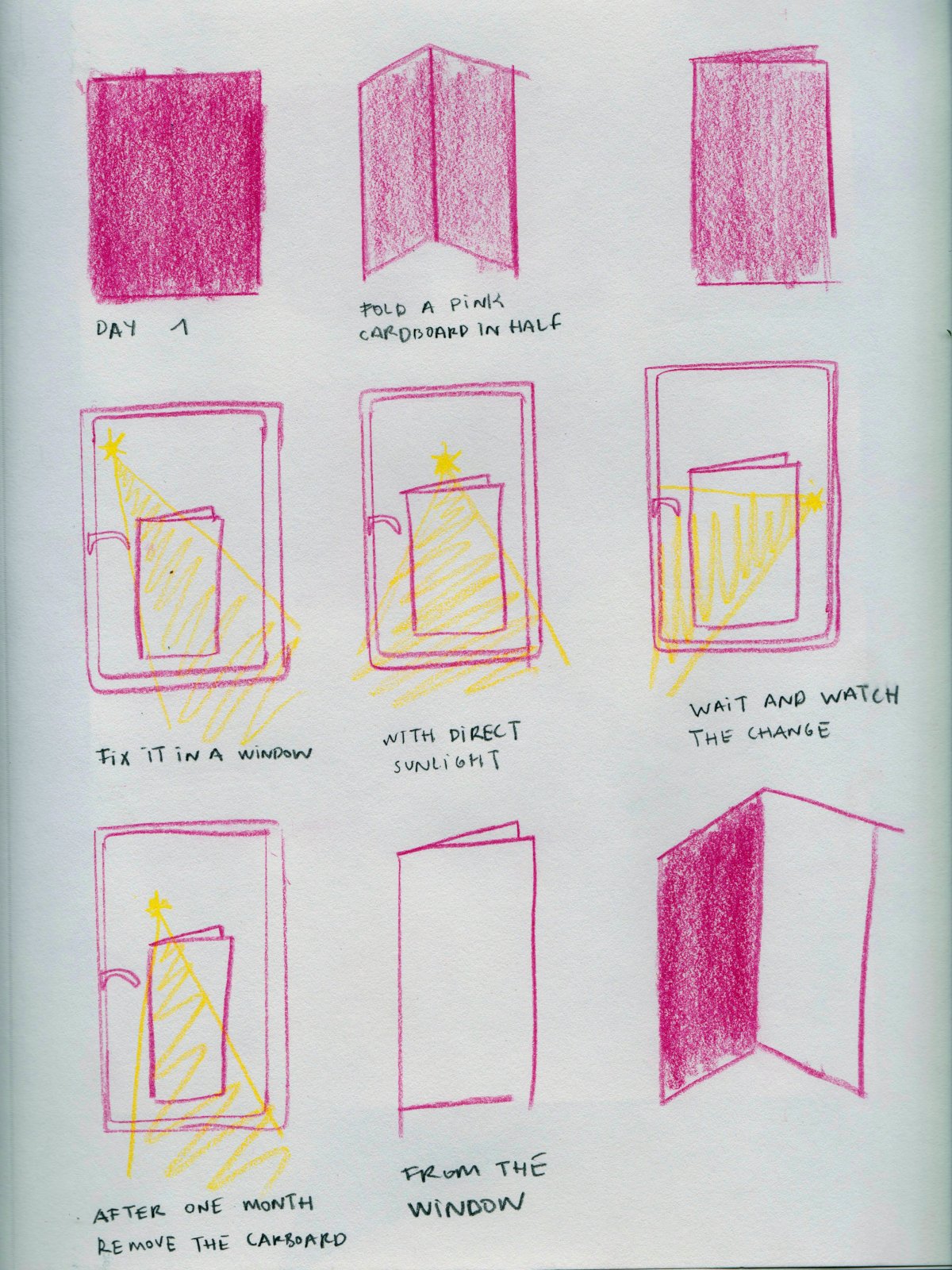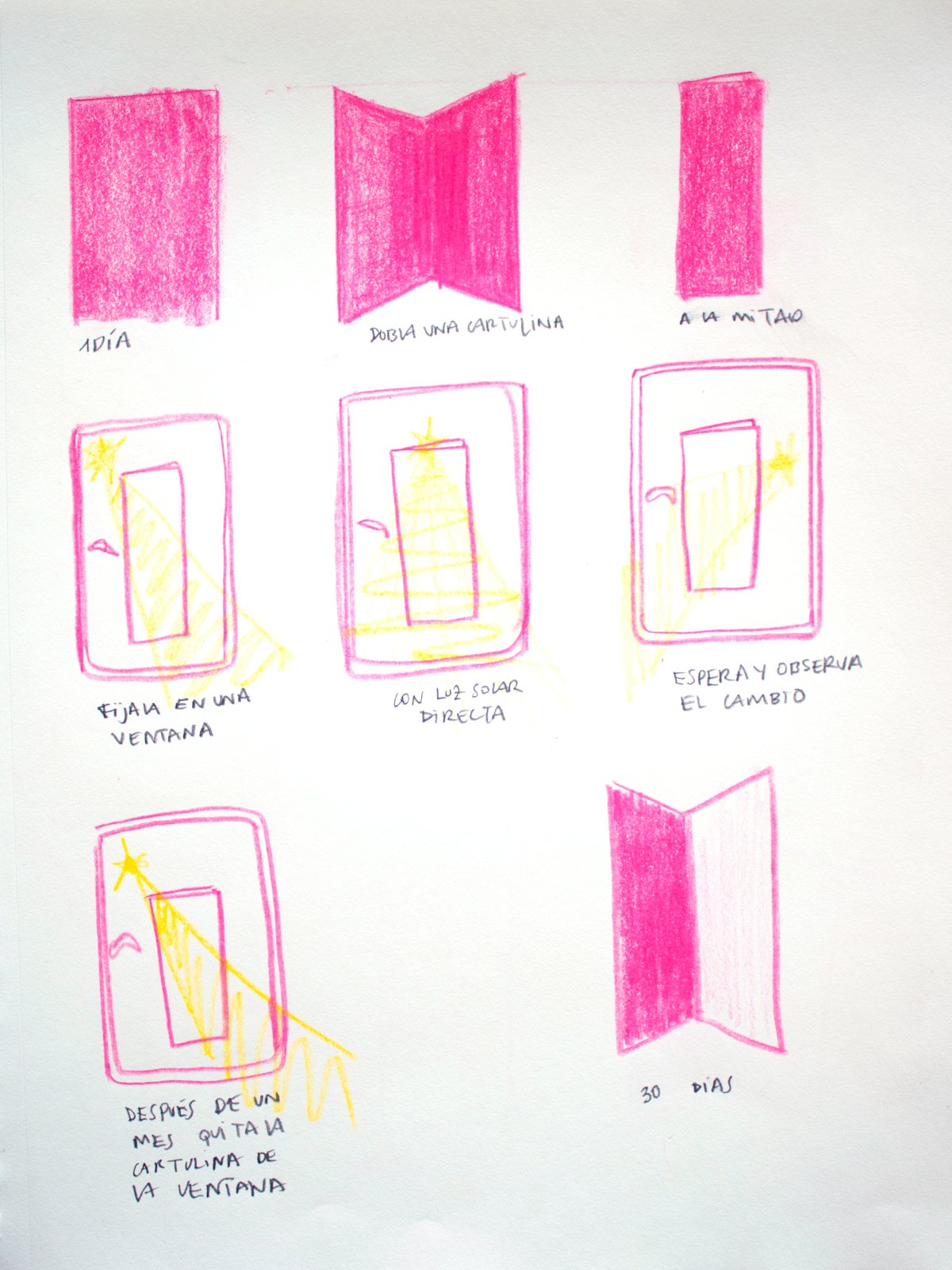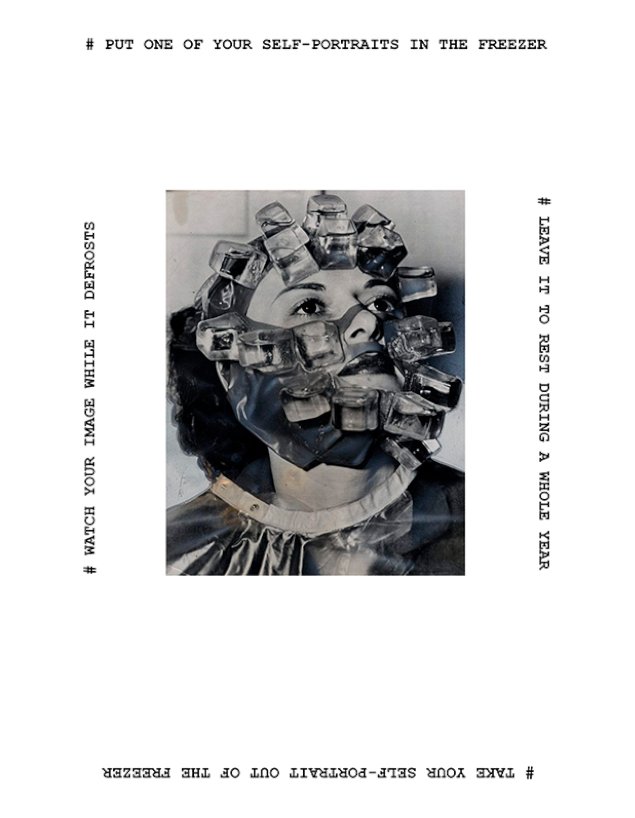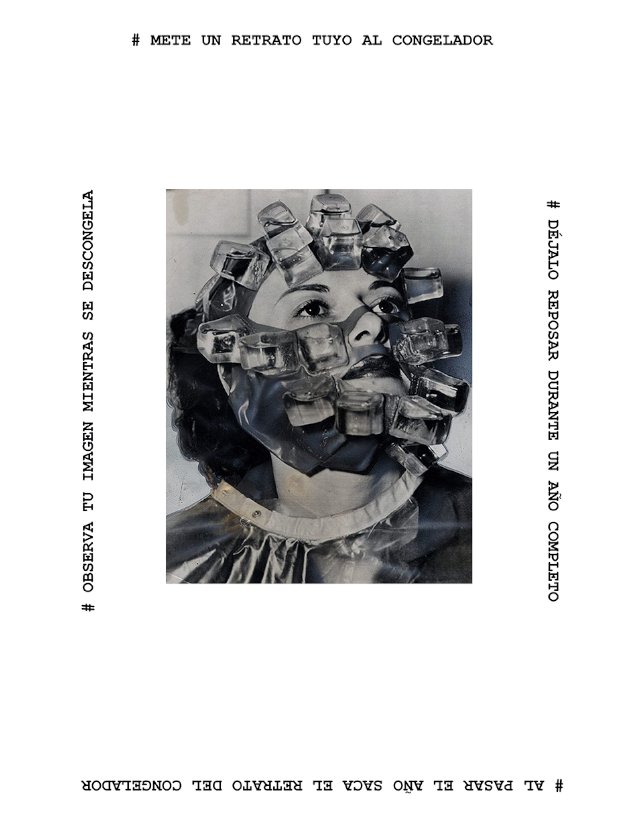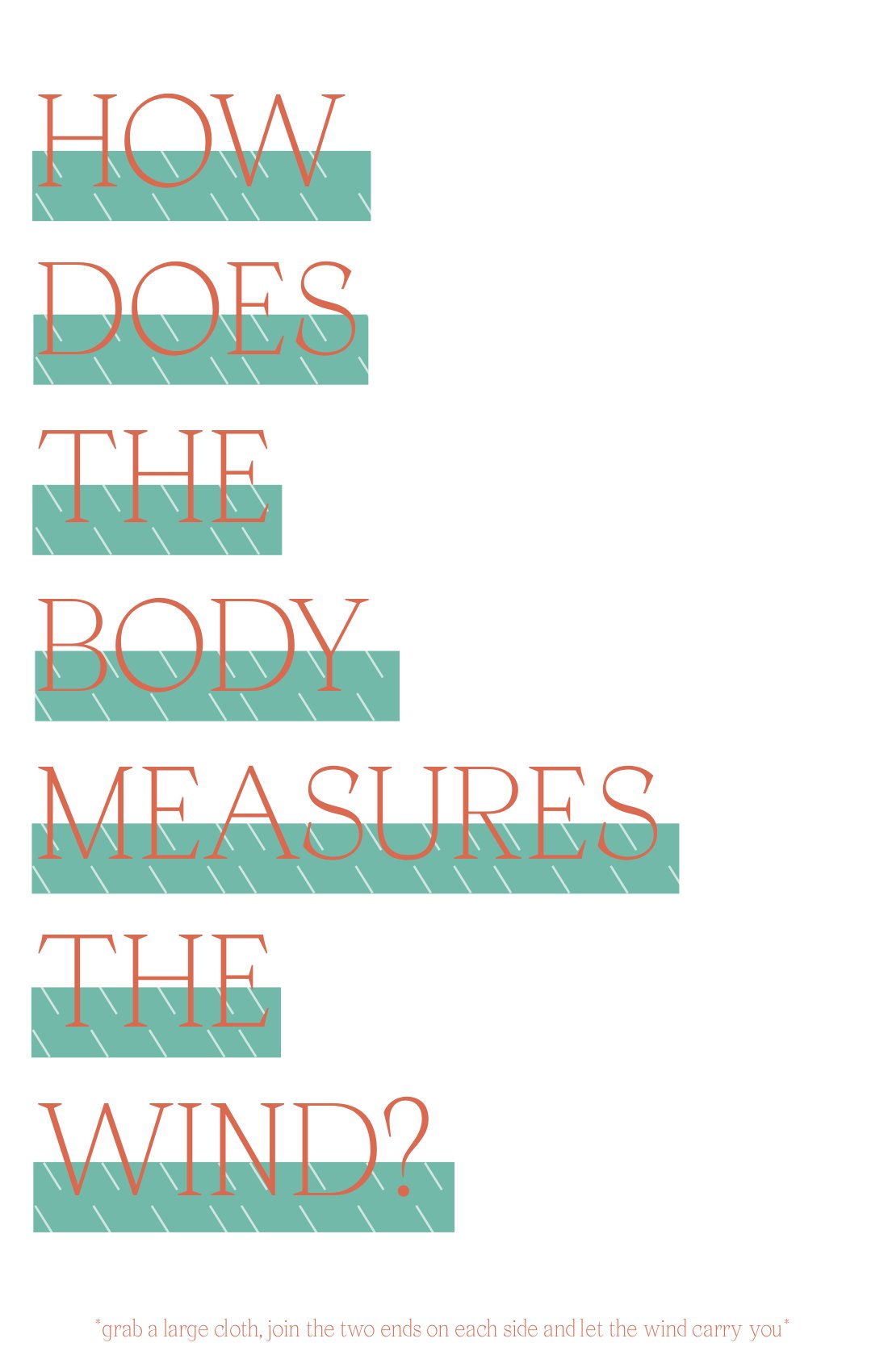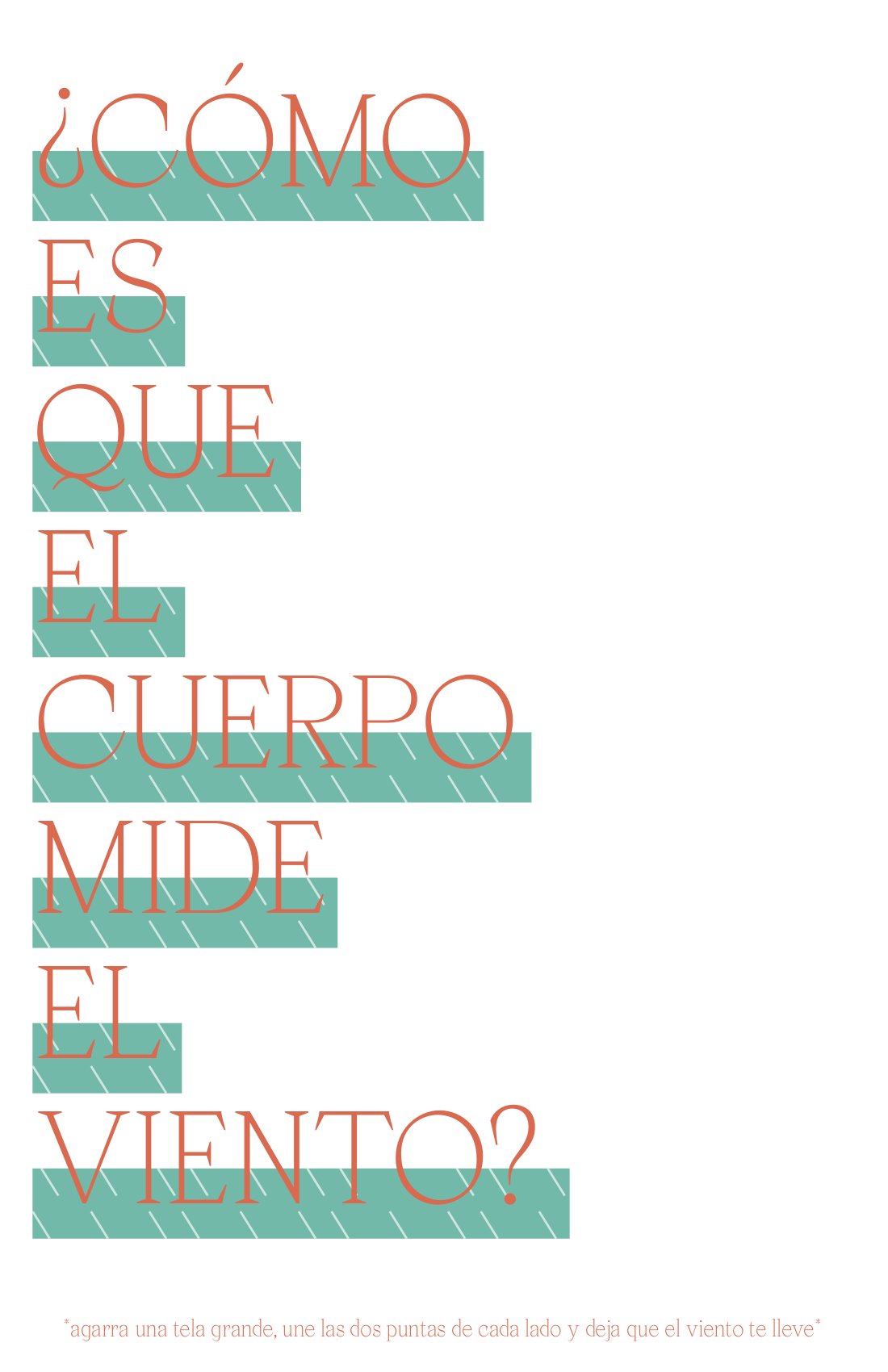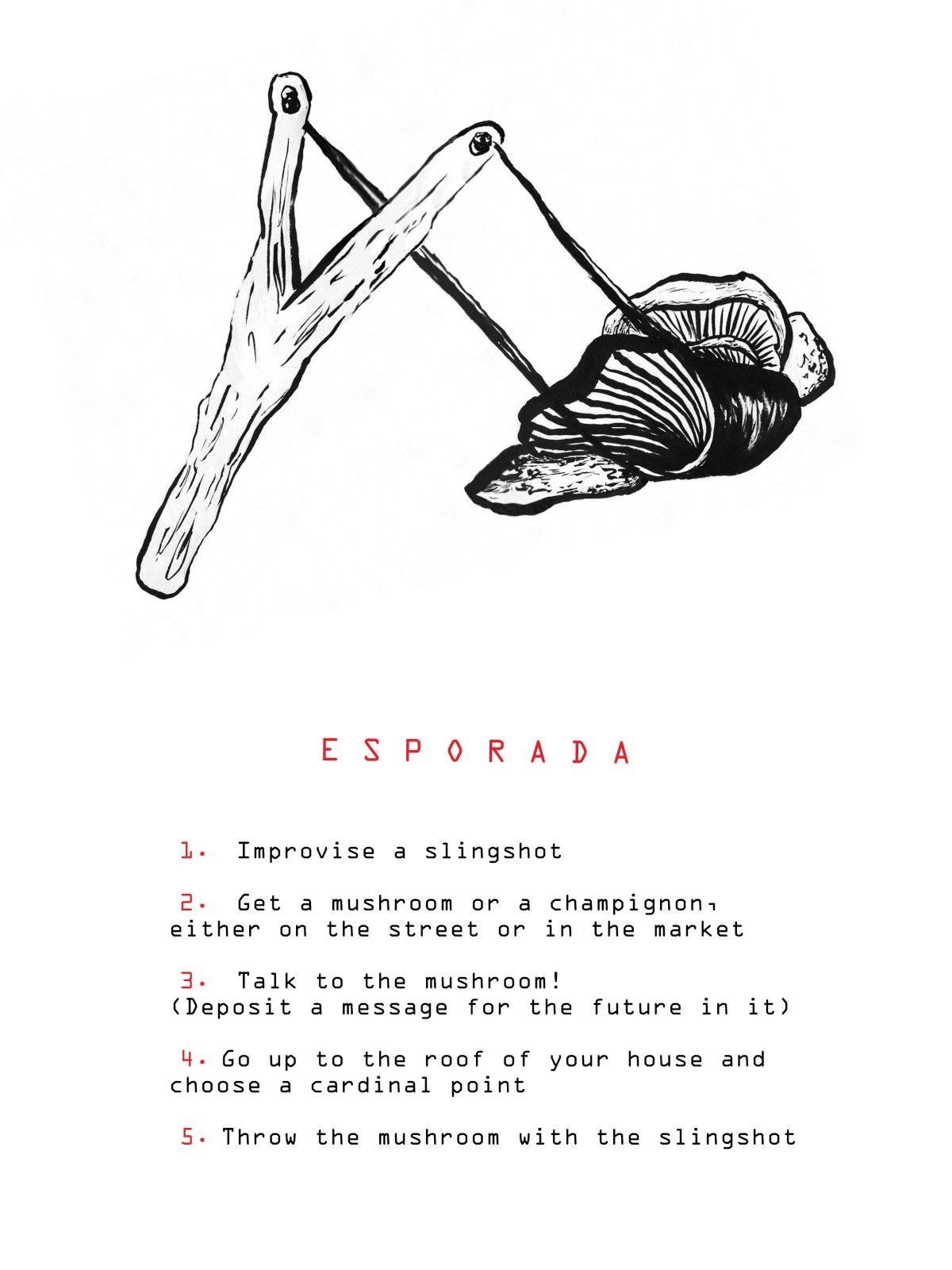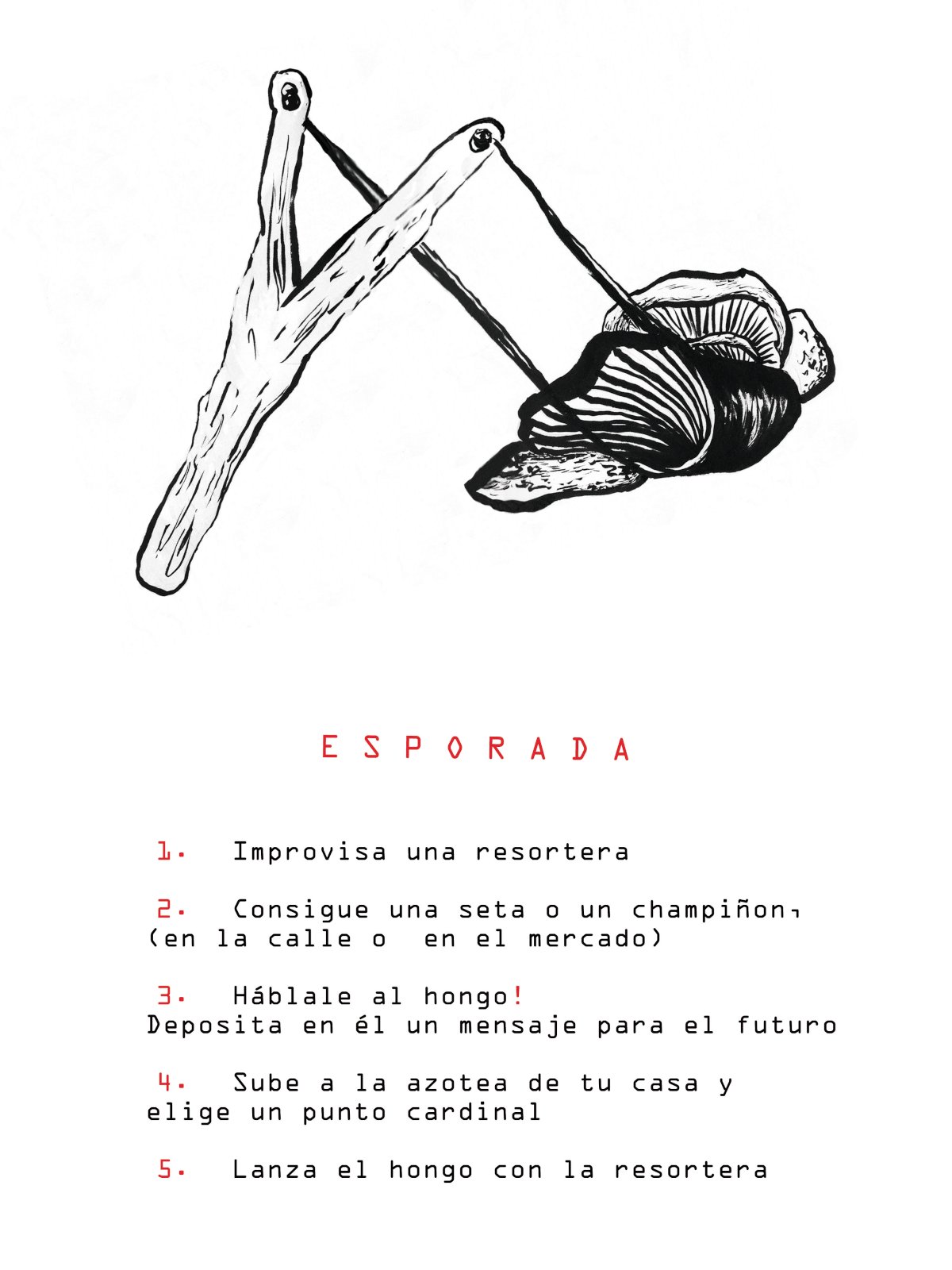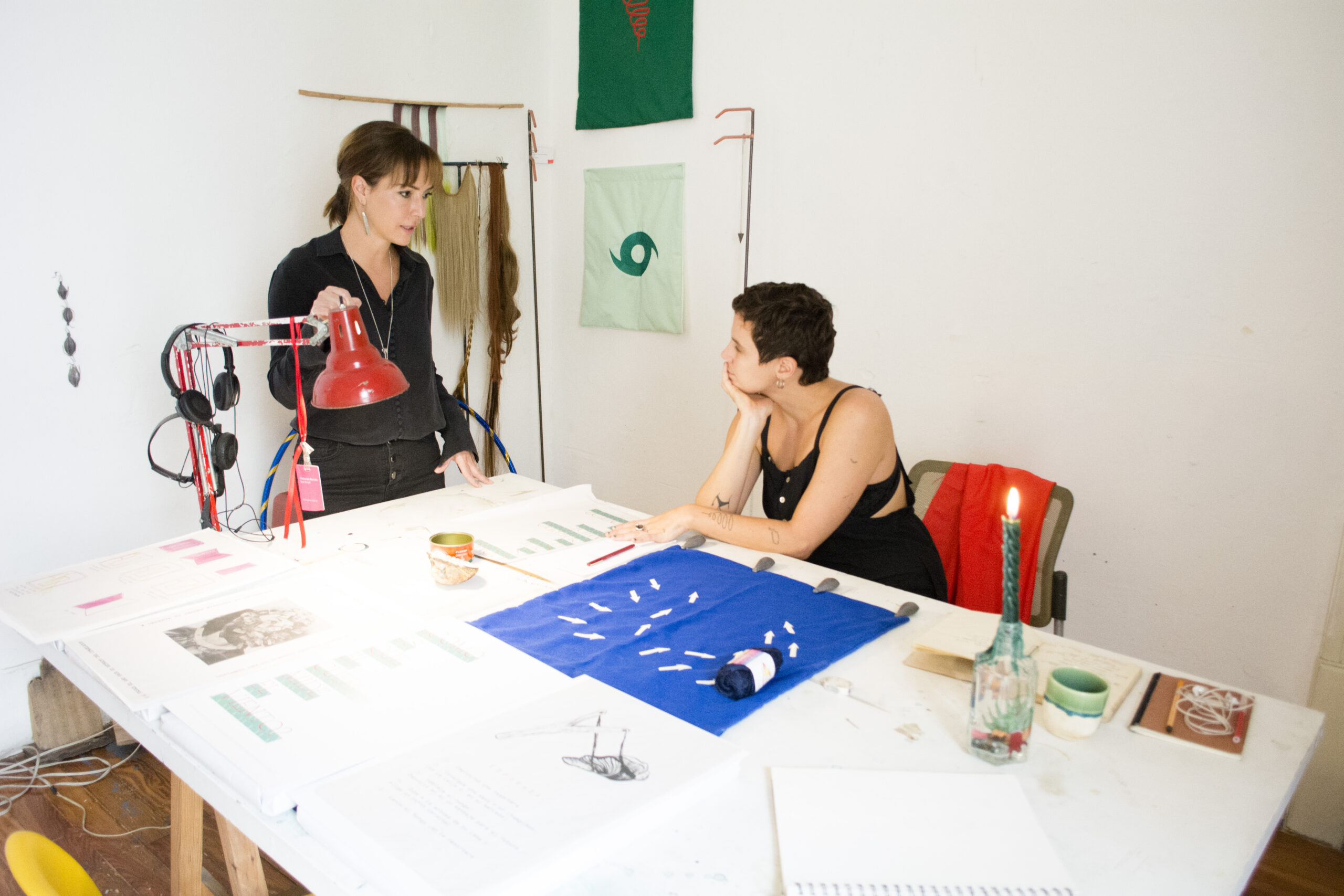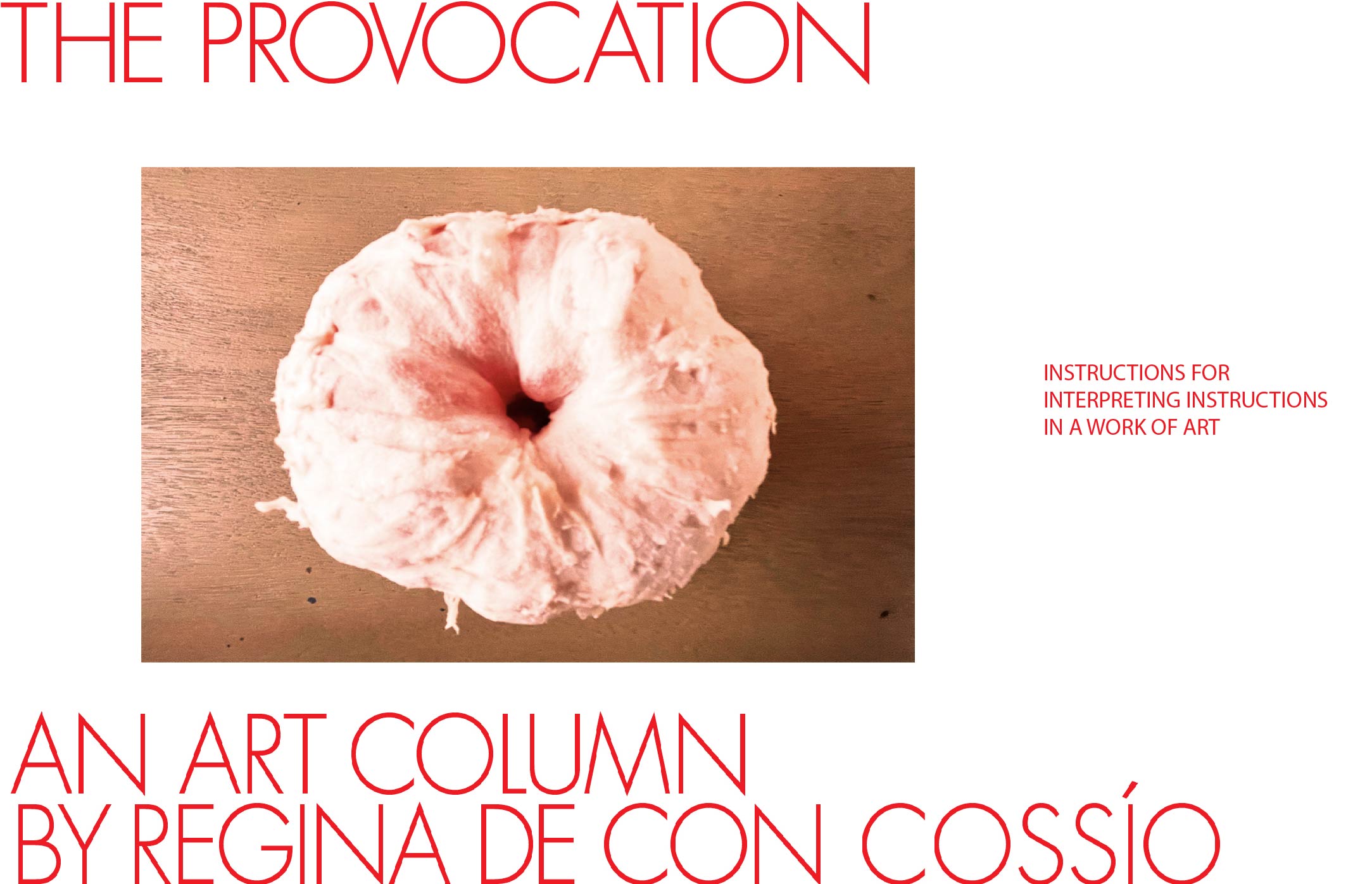Circular instructions for artistic practice
MARÍA CERDÁ ACEBRÓ, PAOLA DE ANDA,
FERNANDA BARRETO AND KARLA LEYVA
In the midst of a period of lockdown in which social and physical distances have been the rule, art is able to overstep the new rules of everydaylife through imagination. In this context, Circular seeks to shift the aesthetic experience from conventional art exhibition venues to the intimate space, without compromisin the safety of those participants who join to this dynamic.
Thus, Paola de Anda (Mexico City, 1979), Fernanda Barreto (São Paulo, 1988), María Cerdá Acebrón (Madríd, 1984) and Karla Leyva (Monterrey, 1979) introduce four posters with instructions to carry out artistic acctions that can be performed anywher and anytime. The idea of the circular arises here as a metaphor for the the movement that the piece can have when passing through different spaces or people’s hands. It is also about the random activation that the instruction can provoke beyond each person interpretation. Even better, that circular movement appels to the transmission of multiple messages when performing the piece.
Instructions as part of artistic practice have a long history within art, from the Situationist International organization—whose members took randomness as starting point of their dérives—to the guidelines wrote by artists such as Roy Lichtestein, Carl Andre, Sol Lewitt, Carol Schneemann, Vito Acconci and Donald Judd, among others, as a way to explore the space. However, instrunctions dont’ tend to define our experience with art but to propose—paradoxical as it may seem—the free conection with art and aesthetic experiences. That is to say, the main idea is for you to have a free and spontaneous relationship with art without having an specific ending.
The posters presented in Circular, “Esporada”, “Medidores”, “Cómo pintar con Sol” and “Ritual de Belleza no. 1” also reveal the artistic interests of this artist. To Paola de Anda, for instance, takes natural elements as an excuse to explore everyday life; Fernanda Barreto uses the language to created different ways of comunications; María Cerdá propose alternative pictorical processes; and Karla Leyva reflects on the idea of the human being as an inorganic and organic being.
In short, while triggering unique experiences thrugh their instructions, the artists also seek to delve into the changes in the daily life, the language, the comunity and the body have had since reality has been defined by the lockdown.
What instructions do you follow when you make a piece of Art? An interview… The word “instruction” is used primarily to learn to use technological devices. But in literature and art it has also worked to carry out playful, even ironic, production and interpretation processes.
Where are the instructions more interesting: in the artist or in the viewer?
George Perec recognized that in writing Life Instructions for Use, he was based on a drawing by Saul Steinberg. Thus, words and images conspire to create a work of art. What is the relationship that you find in this piece of yours between articulated language and images?
What do you prefer: instructions for crying or for winding a watch? (The reference is Cortázar’s texts. I don’t know if it works). What instructions would you give your past SELF to be an artist?
Instructions for interpreting instructions in a work of art
The text belongs to one of the instructions that, in the sixties, Yoko Ono made as part of an artistic process that was recorded in the book Grapefruit. The instructions for use in art were born around that decade, with Yoko Ono, but also with Sol Lewitt.

